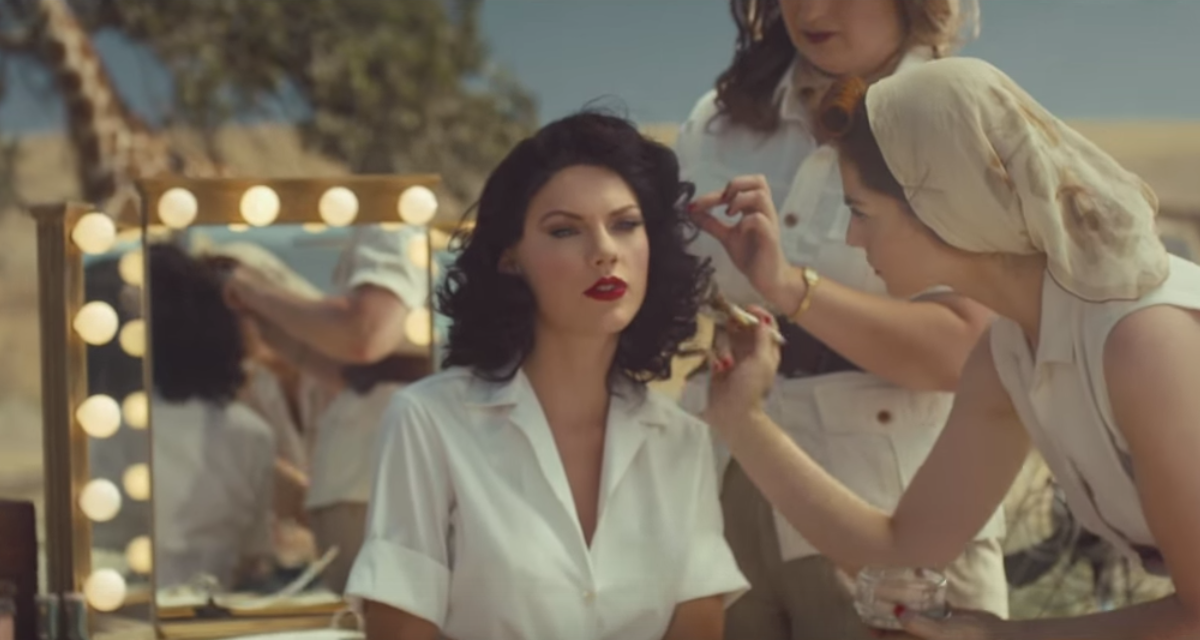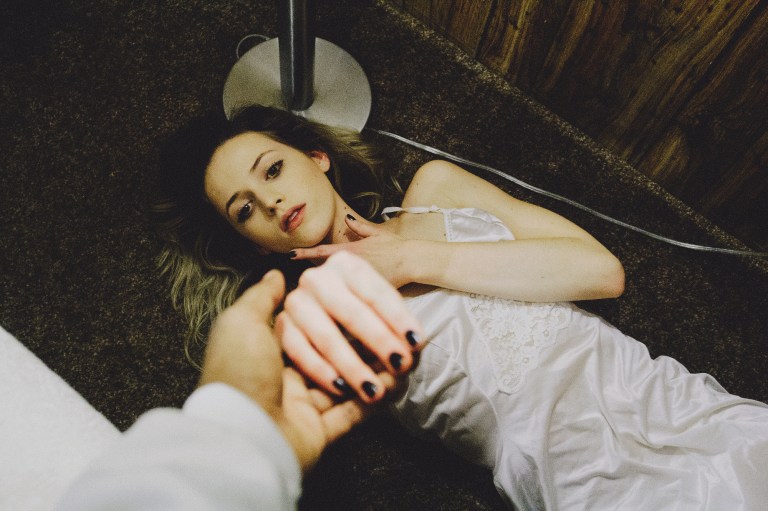Taylor Swift’s Accidental Essay In Race-Relations
The video begins with a wide angle, crane shot showing animals scattering across the savannah. Cut to Swift. She is, at one point, standing next to a lion.

Taylor Swift’s “Wildest Dreams” clip has been viewed 101,491,614 times, and counting. The video begins with a wide angle, crane shot showing animals scattering across the savannah. Cut to Swift. She is, at one point, standing next to a lion.
The clip’s director, Joseph Khan, employs recognizable African tropes to construct a 1950s period film set where Swift falls in love with her married co-star. There are shots of large empty spaces, spectacular waterfalls, flaming sunsets, and electric storms. Swift rides through barren landscapes on a horse.
The Kenyan author Binyavanga Wainaina has mocked these stereotypical depictions of Africa in his essay, “How to Write about Africa.” And Swift’s reliance on these same landscapes, animals, and imagery did not go unnoticed. NPR published a damning critique with writers James Kassaga Arinaitwe and Viviane Rutabingwa charging Swift’s video with romanticizing colonialism. They (accurately) observe that the video is a visual representation of Wainaina’s essay.
Defending his work, Khan stated that the video was not about colonialism. He goes on to explain that it would have been historically inaccurate to load the crew with more black actors. This raises the question, what are the director’s obligations in creating artistic works? Are history and inclusion mutually exclusive? Do we privilege one at the expense of the other? Should directors be required to depict historical events accurately, or be more consciously diverse in their hiring of actors?
Swift’s clip can be read as a historically accurate representation of the period it is seeking to recreate. The colonizers came, saw, disenfranchised, and ignored the African peoples who occupied the land. Their invisibility in this clip mirrors their actual treatment, and, not unimportantly, highlights their omission from mainstream popular culture.
Undoubtedly, the clip’s omission of African people in Africa was unintentional, and innocent. It probably just did not cross the minds of her creative team to present a more inclusive video clip. But isn’t this this problematic in itself? That reflecting diversity requires deliberate and conscious thought. That even in our imaginations, we cannot conjure up an Africa with “Africans”.
Popular culture shapes our understanding of historical and cultural events. And we consume it subconsciously. Its primary function is to entertain. But music, film, and photographs continuously demonstrate that popular culture influences our engagement with and knowledge of controversial issues.
Khan explained there is no political agenda in the video. But popular culture doesn’t exist in a vacuum. It is interpreted against a milieu of discussions surrounding race, culture, and identity politics. ‘Wildest Dreams’ premiered at the Video Music Awards. It was the same awards ceremony that overlooked Nicki Minaj for the Video of the Year nomination. An oversight that did not go unnoticed by Minaj when she took to Twitter to comment on the industry’s failure to recognise Black people’s influence have on popular culture. And resulted in a Twitter exchange between Swift and Minaj, highlighting how mainstream culture treats Black women differently.
The video’s release also roughly coincided with the likes of Janelle Monae’s track where she chants the names of Black victims of police brutality. Khan may not have intended any political agenda in the video, but read against the background of events and discussions taking place, it was inevitability going to be interpreted in such a way.
What is concerning is the overwhelmingly white fantasy world of Taylor Swift and her creative team. The issue is less so whitewashing Africa or romanticizing colonialism, but more so how telling it is that even in fantasies, African’s and minority groups are invisible. It is about acknowledging that what is presented through the medium of popular culture matters as it has an incredible reach. If you will not leverage the popularity of the pop star you are directing to affect change, then you cannot be surprised when the people desiring change and who are alive to their repeated invisibility, use the video clip as a vehicle to highlight this issue. Artistic freedom, or in Khan’s case, a supposed unwavering commitment to historical accuracy, does not deny people the right to critique and to expect better. The director, producer and editor of this clip are all non-white Americans. Are we to understand that they are talented enough to be behind the camera, but not in front of it?
Taylor Swift did donate the proceeds to the African Parks Foundation, an organization dedicated to protecting Africa’s wildlife. Good intentions are unlikely to negate the backlash the clip is receiving. Popular culture matters and Swift’s “Wildest Dreams” is a microcosm more broadly demonstrating our inadequacy in the inclusion and representation of minorities in popular culture. Swift and her creative team should not be held out as lone perpetrators. It is a consistent and pervasive issue. Mainstream culture struggles with representation – minorities are either ignored or stereotyped. Music artists and their creative directors are then able to exploit our shallow understanding of history and culture, and the influence of minorities in shaping it.
Khan and Swift have no obligation to present a more diverse cross-section of race in their video clip. It is a piece of artistic work and as such, they are entitled to artistic freedom. But given the uniqueness of their positions – as America’s leading pop artist, and as an acclaimed film and music video director – Swift and Khan’s music video plays a hugely damaging role in further entrenching the stale and inaccurate ubiquity of whiteness. ![]()




